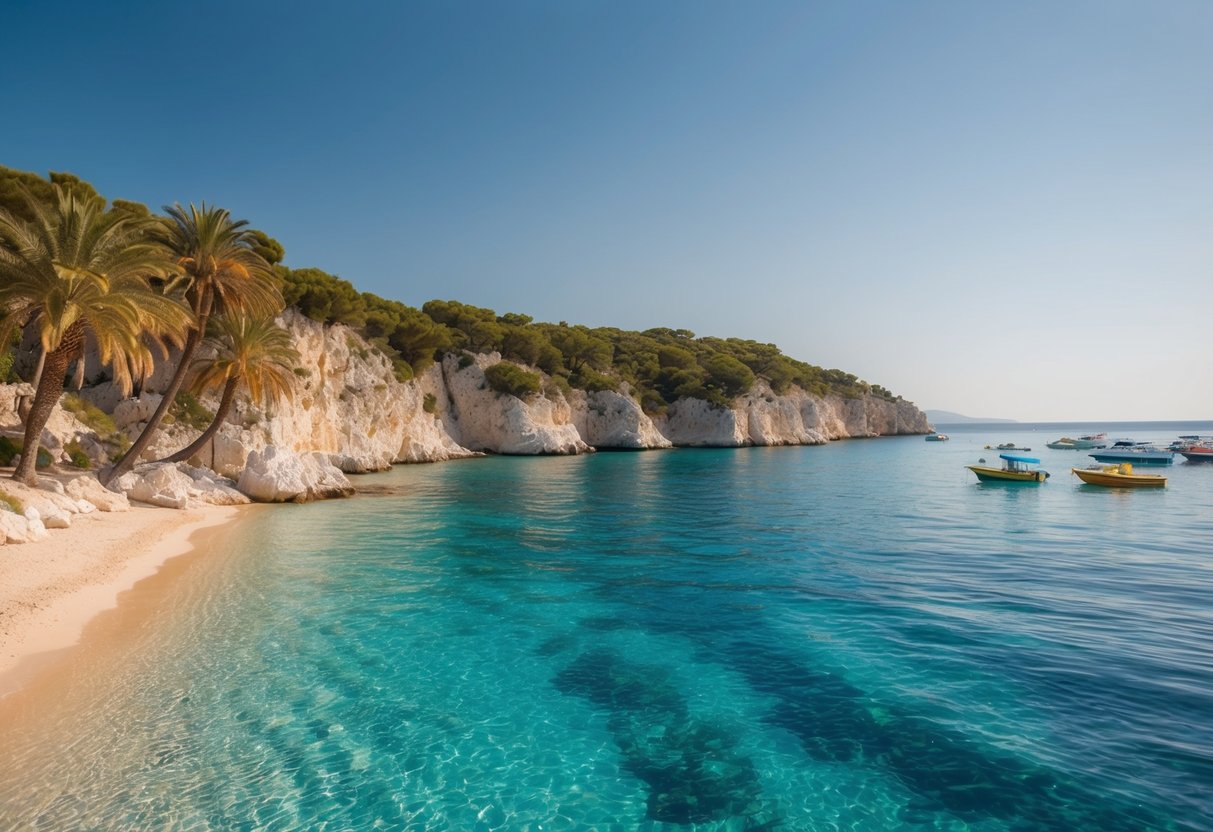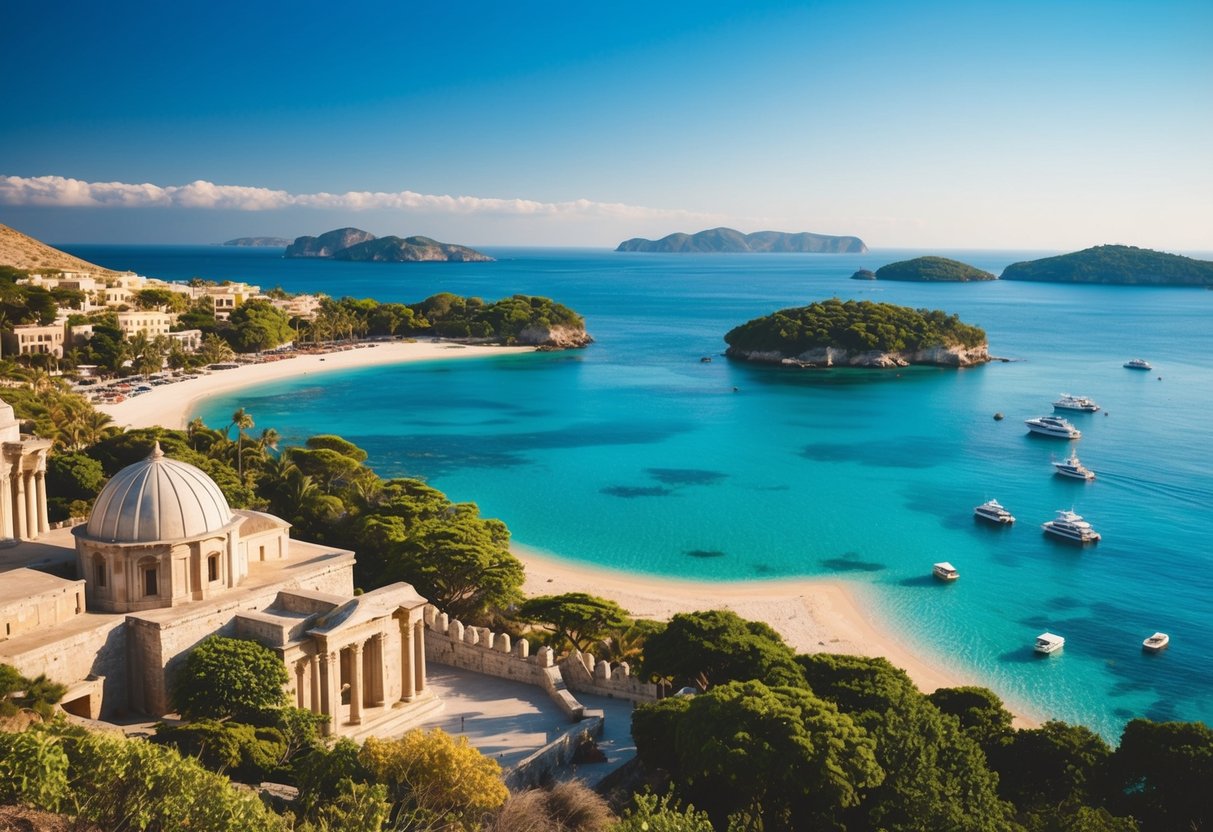
Korčula: Marco Polo’s Alleged Birthplace
Korčula Island is steeped in history and legend, often regarded as the birthplace of the explorer Marco Polo. Its medieval town is well-preserved, featuring narrow streets and ancient buildings. Known for its wine production, especially the local Grk wine, Korčula offers more than just history. The island’s lush forests and pristine beaches provide ample opportunities for outdoor activities. Marco Polo’s alleged heritage adds an intriguing cultural dimension to Korčula’s allure.
The Unexplored Cres and Lošinj
Cres and Lošinj, connected by a bridge, offer an escape from the more tourist-heavy islands. Cres is known for its wild landscapes and the freshwater Lake Vrana. Its quiet coves and pebble beaches provide a serene setting for relaxation. Lošinj, often associated with wellness tourism, boasts a mild climate and a rich biodiversity. Visitors enjoy scenic hiking trails and aromatic gardens. Together, Cres and Lošinj present a tranquil retreat with hidden gems to discover.
Exploring Croatia’s National Parks
Croatia’s national parks offer stunning landscapes and unique ecosystems. These destinations provide an opportunity to learn about diverse flora and fauna, while engaging in recreational activities such as hiking, swimming, and boating.
Mljet National Park
Mljet National Park, located on the island of Mljet, is renowned for its lush forests, saltwater lakes, and diverse wildlife. Veliko Jezero and Malo Jezero, the park’s iconic lakes, are connected by a narrow channel and surrounded by dense pine forests. The island also hosts a rich variety of bird species, making it a paradise for birdwatchers. Visitors can explore the Benedictine monastery on St. Mary’s Island or enjoy kayaking, biking, and hiking along the park’s well-marked trails. With its serene atmosphere and natural beauty, Mljet offers a peaceful retreat for nature lovers looking to escape the hustle and bustle.
Kornati National Park
Comprising over 140 islands, Kornati National Park is a maritime wonderland situated in northern Dalmatia. The landscape is marked by a rugged coastline, crystal-clear waters, and vibrant marine life. It’s a hotspot for sailing and diving enthusiasts eager to explore its hidden coves and underwater world. The park’s varied ecosystems support unique plant and animal species, making it an important conservation area. Kornati draws travelers seeking an adventure through its labyrinth of islands. Hiking trails on some islands provide magnificent views of the Adriatic Sea. This remote archipelago invites visitors to immerse in its unspoiled natural beauty.
The Krka National Park Experience
Located along the Krka River, Krka National Park is celebrated for its cascading waterfalls and rich biodiversity. The park’s highlight, Skradinski Buk, is a spectacular multi-tiered waterfall that captivates visitors with its power and beauty. Surrounding walking trails lead to breathtaking vantage points and charming picnic areas. The park also contains ancient Roman ruins and traditional watermills, offering a glimpse into the region’s history. Boat tours provide a unique perspective of the park’s waterways, allowing visitors to reach the tranquil Visovac Island. Krka is a fantastic blend of natural splendor and cultural heritage, providing an enriching experience for all who visit.
Cultural and Historical Richness

Croatia’s Adriatic Coastline is blessed with a wealth of cultural and historical sites. From Dubrovnik’s stunning architecture to the remnants of Split’s ancient glory, each location provides a unique glimpse into a rich past.
Dubrovnik: The Pearl of the Adriatic
Dubrovnik, often referred to as the Pearl of the Adriatic, stands as a testament to the rich history of Croatia. Encased within its iconic medieval walls, the city offers impressive views of the surrounding coastline. Its old town is a UNESCO World Heritage site, featuring meticulously preserved structures like the Rector’s Palace and the Sponza Palace, showcasing Gothic, Renaissance, and Baroque styles.
Visitors often stroll along the Stradun, the main street lined with shops and restaurants, soaking in the vibrant atmosphere. The city’s historical significance is heightened by landmarks such as Fort Lovrijenac. Additionally, the annual Dubrovnik Summer Festival brings music, theater, and dance performances, further emphasizing its cultural vibrancy.